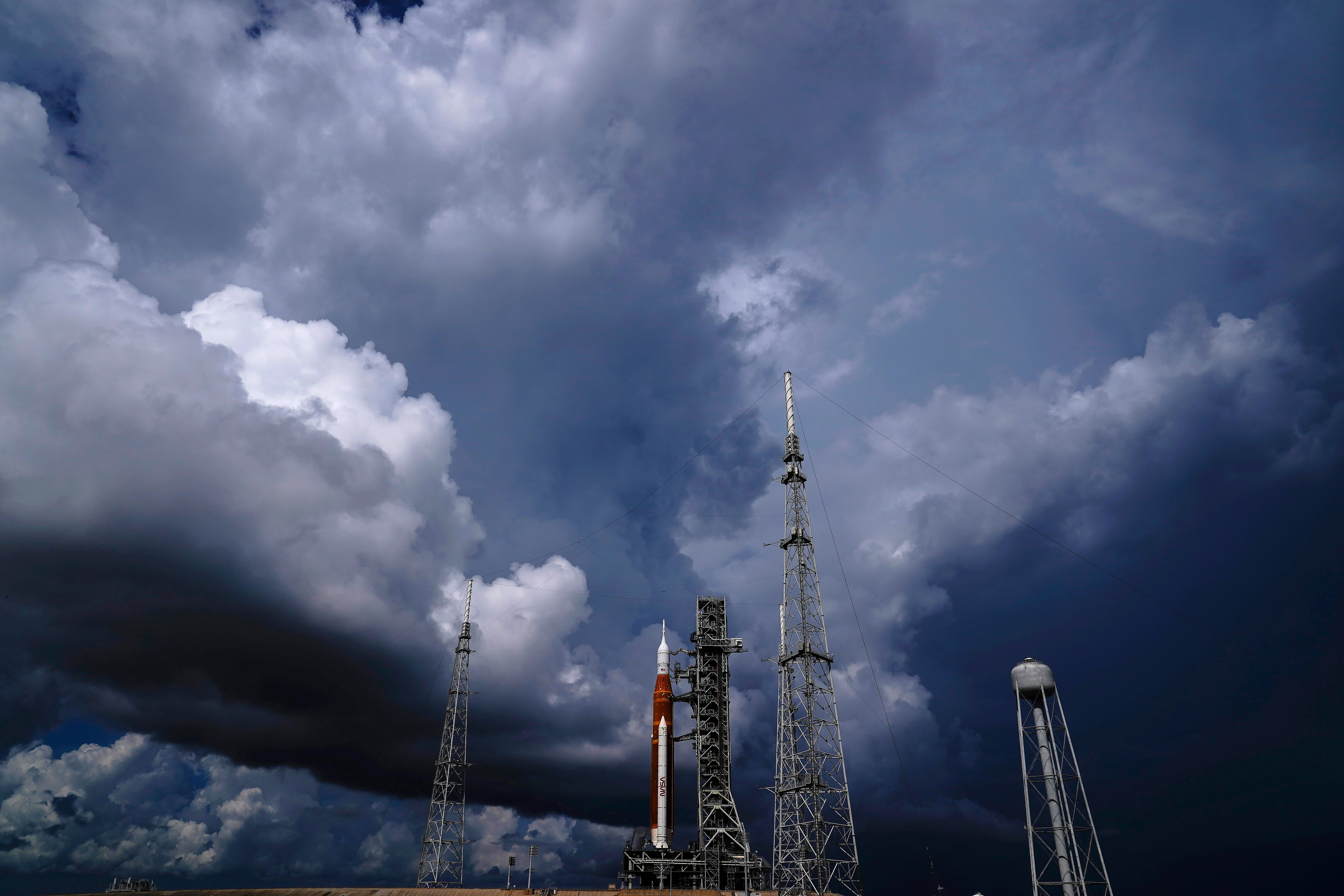Approaching storm may delay launch try for NASA moon rocket
NASA's new moon rocket could face more launch delays, this time by tropical weather

Your support helps us to tell the story
From reproductive rights to climate change to Big Tech, The Independent is on the ground when the story is developing. Whether it's investigating the financials of Elon Musk's pro-Trump PAC or producing our latest documentary, 'The A Word', which shines a light on the American women fighting for reproductive rights, we know how important it is to parse out the facts from the messaging.
At such a critical moment in US history, we need reporters on the ground. Your donation allows us to keep sending journalists to speak to both sides of the story.
The Independent is trusted by Americans across the entire political spectrum. And unlike many other quality news outlets, we choose not to lock Americans out of our reporting and analysis with paywalls. We believe quality journalism should be available to everyone, paid for by those who can afford it.
Your support makes all the difference.An approaching storm threatens to delay NASA's next launch attempt for its new moon rocket, already grounded for weeks by fuel leaks.
A tropical depression in the southern Caribbean is moving toward Florida and could become a major hurricane.
Managers said Friday that the rocket is ready to blast off Tuesday on its first test flight without astronauts, after overcoming more hydrogen leaks during a fueling test earlier this week.
NASA said it will keep monitoring the forecast and decide no later than Saturday whether to not only delay the launch, but haul the rocket off the pad and back to the hangar. Officials said it's unclear when the next launch attempt would be — whether October or even November — if the rocket must seek shelter indoors.
It takes three days of preparations to get the rocket back into Kennedy Space Center's mammoth Vehicle Assembly Building, four miles away.
"I don't think we’re cutting it close," said NASA's Tom Whitmeyer, deputy associate administrator for exploration systems. "We’re just taking it a step at a time.”
This would be the third launch attempt for the Space Launch System rocket, the most powerful ever built by NASA. Fuel leaks and other technical problems scrapped the first two tries.
The 322-foot (98-meter) rocket can withstand gusts of 85 mph (137 kph) at the pad, but only 46 mph (74 kph) once it's on the move.
___
The Associated Press Health and Science Department receives support from the Howard Hughes Medical Institute’s Department of Science Education. The AP is solely responsible for all content.